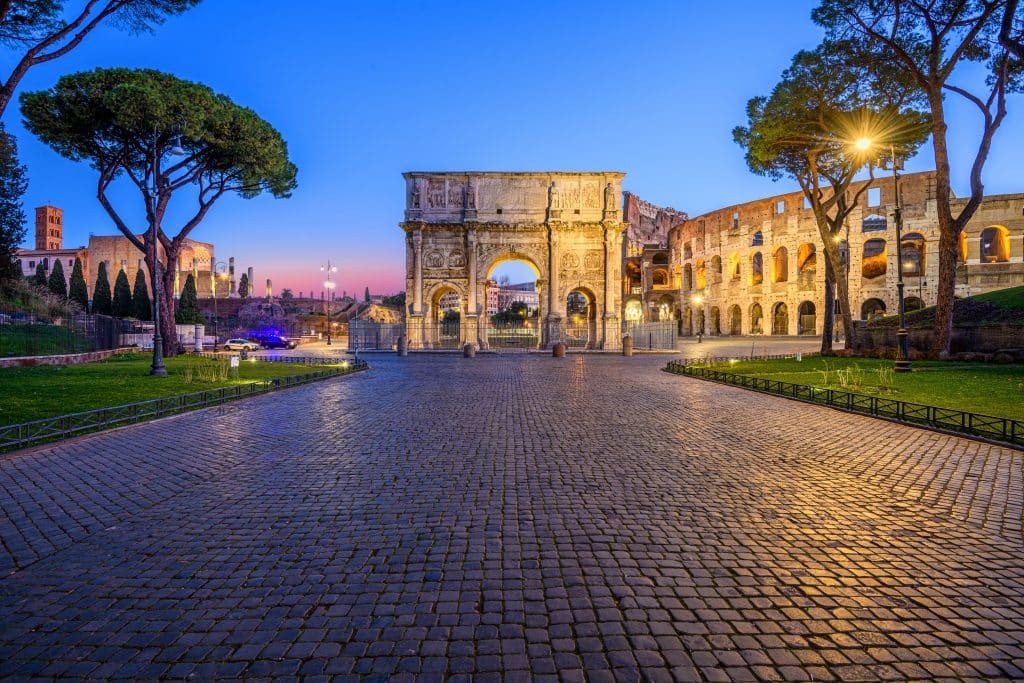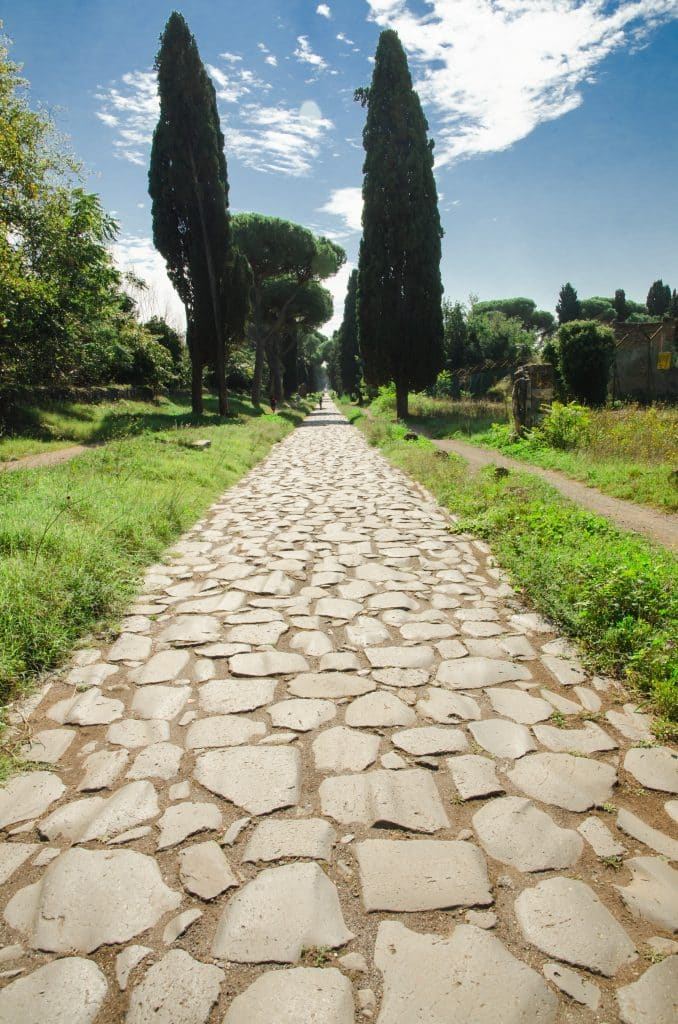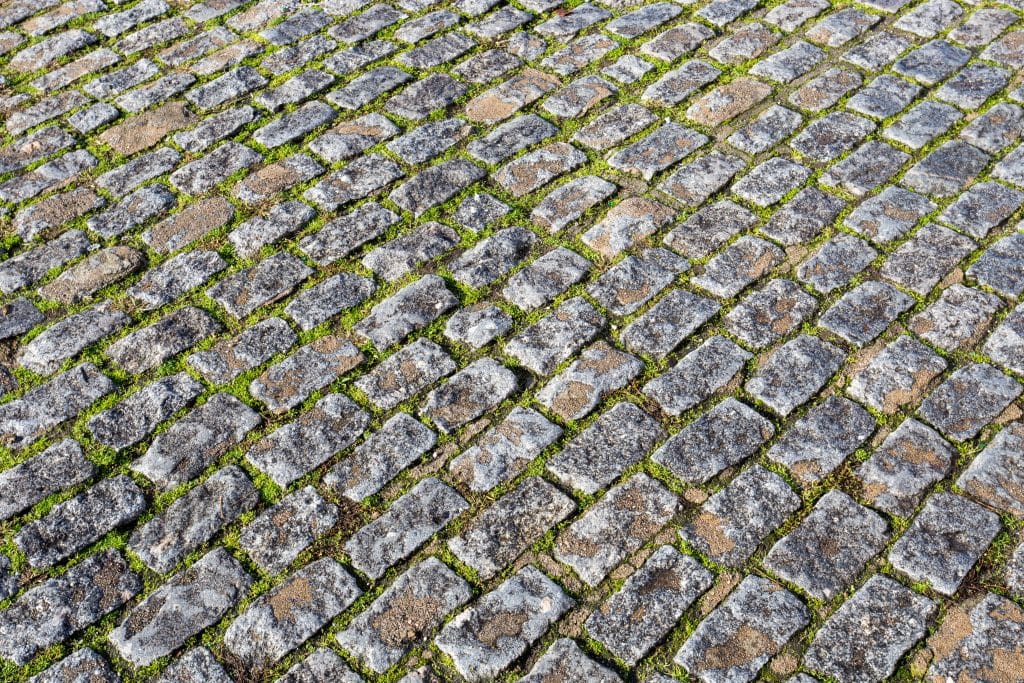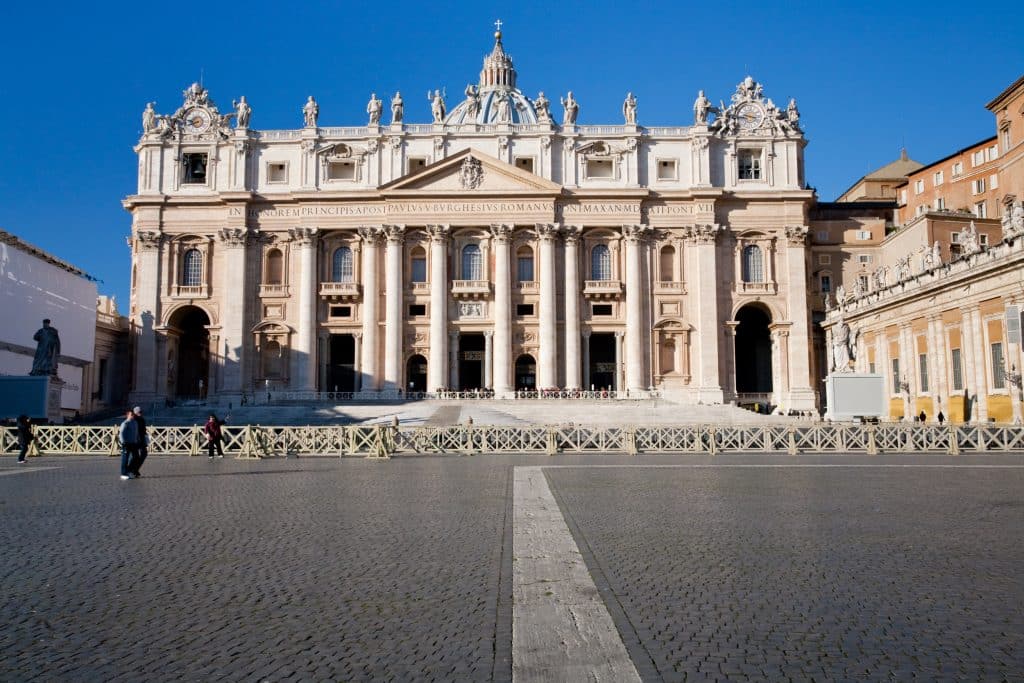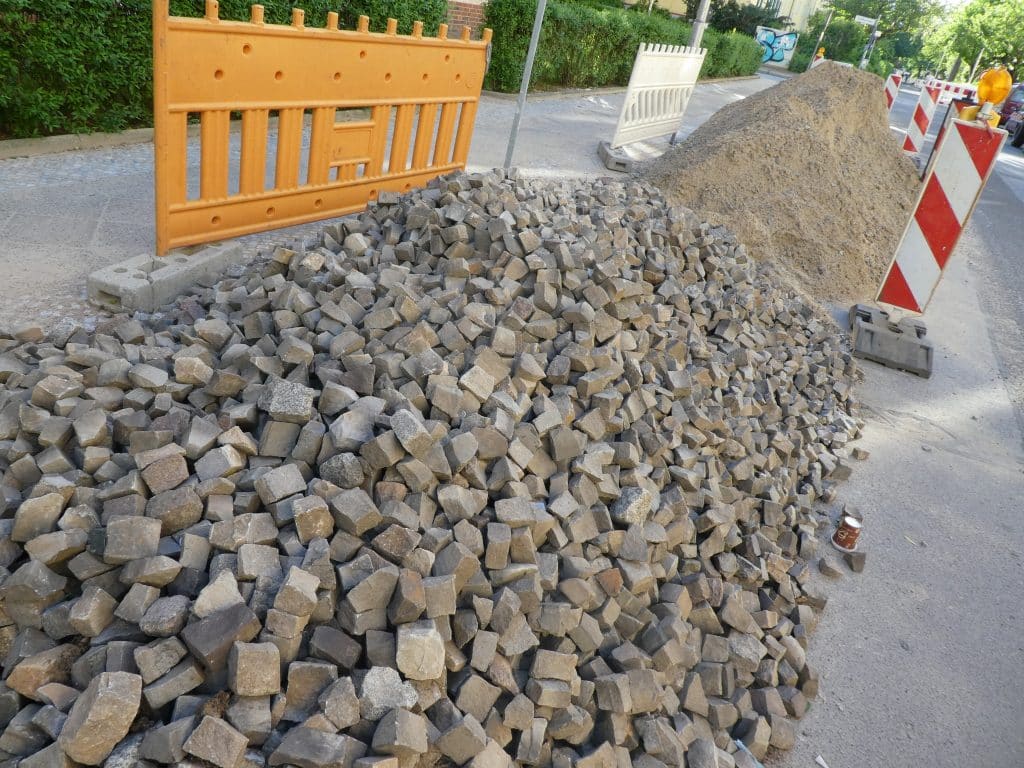When you think of European cobblestone, you might imagine cityscapes with roads and buildings unchanged through the centuries. While this is often the case, it’s also true that European cobblestones have evolved in both design and usage ever since the Roman Empire.
From Rome to Revolution
The earliest cobbles sourced by the Romans reflected the natural diversity of the local stones available and varied greatly in size and shape. This randomness meant a labor-intensive process to achieve a stable and even road surface.
After the fall of the Roman Empire, the dark ages saw a decline in new road building between cities, but within those cities, the use of more uniform cobblestones grew in popularity.
By the Renaissance, wealthy city-states and their Patrons were investing in skilled workers who could cut and shape the cobblestone to standard sizes.
This more organized city-planning meant a cleaner environment for their citizens, improved health and commerce, and a sense of permanence. There are many examples across Europe of cities whose historic cobblestone streets are still intact today.
The onset of the Industrial Revolution saw another step toward uniformity with the introduction of setts, or Belgian blocks. Unlike early, irregular European cobblestones, these were quarried granite, cut into rectangles. This made it easier to lay them closer together, in consistent patterns.
Steam-powered and, eventually, electric saws allowed for the mass production of setts. This industrial approach to road building better met the needs of modern traffic and transportation.
Historic Cobblestone in a Modern World
Over time, some cities began to replace their historic cobblestone with the newer blocks, creating a dilemma that persists to this day: How do you balance aesthetic appeal, tradition and history with functionality and the needs of modern society?
We can look to Italy for a prime example of this dilemma. Rome’s Sampietrini (Little St. Peters)-named for their use in St. Peter’s Square in Vatican City-were first set in 1585, but were popularized in the 1700’s. Dark in nature due to their volcanic origins, these pavers are typical of Italians’ love/hate relationship with their European cobblestone.
While tourists and purists love and admire the Sampietrini, local motorists, moped and scooter riders, and women in high heels have had enough of them.
Rome’s solution? A compromise of sorts. The city has been steadily removing the cobblestone pavers from its busier streets, which it then covers with asphalt. Conversely, it has been taking the displaced Sampietrini and installing them on quieter, less travelled streets.
Some cities have tried other solutions. Edinburgh, Scotland chose to excavate its historic cobblestone roads, lay a solid, modern foundation, and relay the cobbles in a more evenly surfaced manner. While twice as expensive as laying asphalt, they decided preserving part of their history was worth it.
And the Dutch city of Breda is one of several cities who have pulled up uneven cobblestones, sliced them with a laser, and relayed them to create a more uniform surface. This allowed it to meet its goal of maintaining the aesthetic appeal of the historic cobblestone streets while making them accessible for local wheelchair users. Read more about Stone Farm’s sliced cobblestone.
From the Roman Empire to the streets of modern cities, European cobblestone has played a crucial role in shaping infrastructure and urban aesthetics. Its enduring and evolving presence underscores not just its practical importance over the centuries, but its symbolic and cultural relevance as well.


